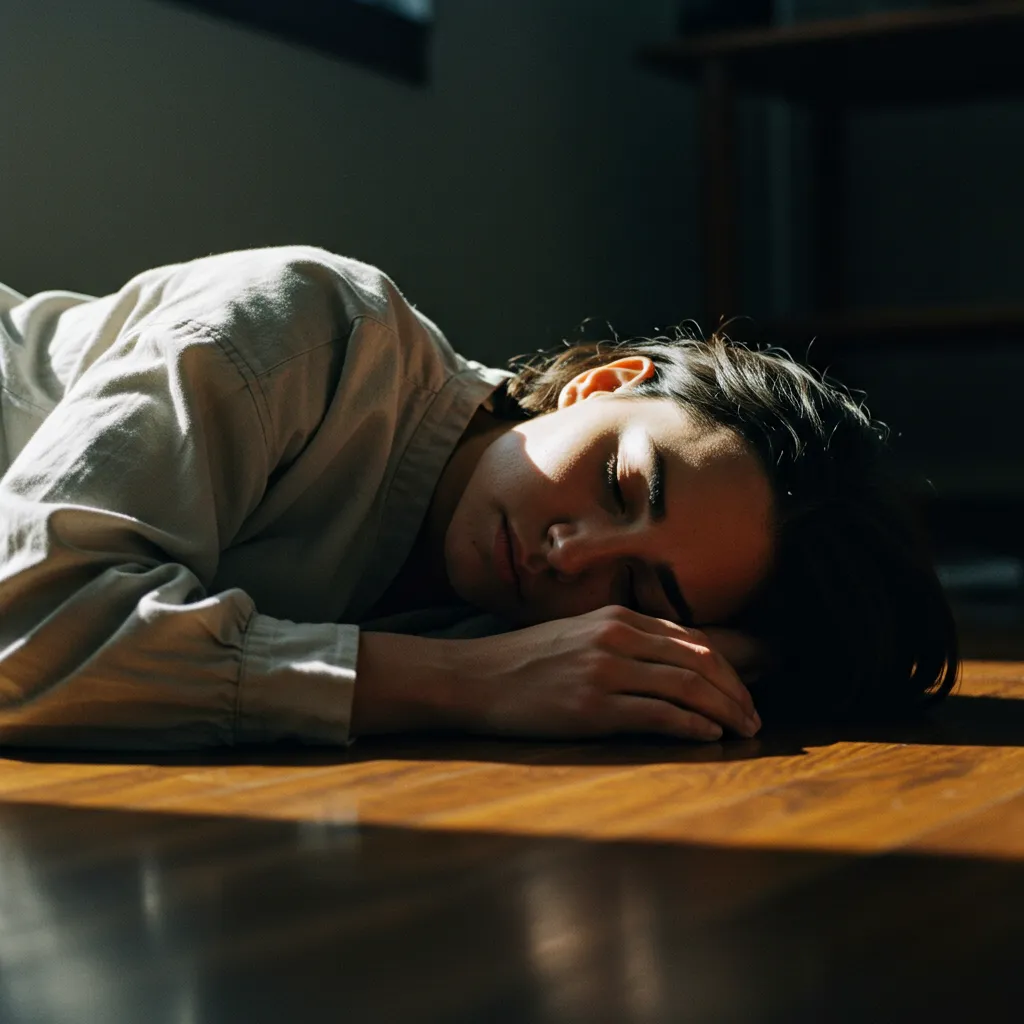
Sleeping on Hard vs Soft Surfaces: Which Is Better for Recovery & Sleep Quality?
Sleep on Hard vs Soft Surfaces — Which Is Better?
Sleep quality shapes how you feel, recover, and perform each day. One question people ask: Is sleeping on a hard surface (like the floor) better than sleeping on a soft mattress?
Understanding Hard, Medium-Firm, and Soft Surfaces
Hard Surface (Firmness 1–3/10)
Floor, tatami, or a mat ≤1–2 cm thick with almost no cushioning.
Feels like lying straight on the ground — unyielding, almost no give under your hips or shoulders.
Medium-Firm Surface (Firmness 4–6/10)
Mattress, futon, or thick mat around 8–12 cm — think of a dense 10 cm yoga mat.
Feels solid but lightly padded — supports the spine while allowing just enough softness at hips and shoulders to stay level.
Soft Surface (Firmness 7–10/10)
Plush mattress 25–40 cm+ with thick foam or pillow-top layers.
Feels like a very soft bed that hugs and sinks under you, deeply contouring to the body — cozy but can let the spine sag.

How Surface Firmness Affects Your Body
1. Spinal Alignment
Hard surfaces keep the spine from sagging but can cause pressure points and awkward curves.
Soft surfaces let the body sink too much, pulling the spine out of neutral.
Most studies show a medium-firm surface keeps the spine supported while reducing pressure.
2. Sleep Quality & Deep Sleep
Polysomnography research shows both extreme hardness and extreme softness can reduce slow-wave (deep) sleep and increase awakenings.
Medium-firm surfaces consistently score higher on the Pittsburgh Sleep Quality Index (PSQI) and help sustain deeper sleep [Hu et al., 2025; Hong et al., 2022].
3. Heart Rate & Breathing
Heart rate variability (HRV) studies show medium-firm improves parasympathetic activity — lower resting heart rate and steadier breathing — compared to very hard floors [Kuo et al., 2013].
Ultra-hard sleeping can slightly raise heart rate and stress levels from discomfort.
4. Morning Pain & Pressure Points
Hard floors or very thin mats can increase shoulder, hip, and low-back discomfort.
Medium-firm reduces pressure points and stiffness compared with both soft and hard extremes [Radwan et al., 2015].
Key Research Insights
Kovacs et al. (2003, Lancet): People with back pain reported less pain and better sleep on medium-firm vs firm mattresses.
Jacobson et al. (2002, J Manipulative Physiol Ther): Switching from old beds to medium-firm improved sleep quality and reduced disability.
Radwan et al. (2015, Appl Ergon): Review concludes medium-firm best balances support & comfort; hard can cause pressure/misalignment, soft can cause spinal sagging.
Hong et al. (2022, J Biomech): Mattress stiffness changes spinal curvature and contact pressures; medium levels preserve neutral spine.
Kuo et al. (2013, Appl Ergon): Bedding firmness modulates HRV; medium firmness encourages calmer, recovery-oriented nervous system activity.
Hu et al. (2025, Nat Sci Sleep): Medium firmness linked to more deep sleep and fewer awakenings vs very hard or very soft surfaces.
Overall: Medium-firm repeatedly shows the most balanced physiological and comfort benefits.
No robust evidence shows floor sleeping improves deep sleep or heart rate for healthy adults — though individuals may feel better if escaping a worn-out soft mattress.
Personal Experience — Why You Might Sleep Better on the Floor
Some people (like me) notice dramatic improvement after switching to the floor. Possible reasons:
Escaping a saggy mattress: A bad, overly soft bed can misalign your spine; a hard floor restores neutral posture.
Less heat and motion: Floors stay cool and stable, reducing micro-awakenings.
Routine reset: Changing sleep setup often comes with better bedtime habits and awareness.
Body type & position: Back or stomach sleepers sometimes prefer a firmer feel.
Your improvement doesn’t mean hard floors are ideal for everyone — it likely means your old surface was too soft or uneven.
Bottom Line
Medium-firm is the research-backed sweet spot (4–6/10 firmness). Hard floors can help if you’re escaping a saggy, overly soft mattress — but most evidence shows medium-firm provides the best mix of spinal support, sleep quality, deep sleep, and heart-rate recovery. Very soft mattresses feel cozy but often lead to spinal misalignment and next-day stiffness.
References
Kovacs, F. M., Abraira, V., Peña, A., et al. (2003). Effect of firmness of mattress on chronic non-specific low-back pain: Randomised, double-blind, controlled, multicentre trial. The Lancet, 362(9396), 1599–1604.
Jacobson, B. H., Gemmell, H. A., Hayes, B. M., Altena, T. S. (2002). Effectiveness of a selected bedding system on quality of sleep, low back pain, shoulder pain, and spine stiffness. J Manipulative Physiol Ther, 25(2), 88–92.
Radwan, A., et al. (2015). Effect of different mattress designs on sleep quality, spinal alignment, and back pain: A systematic review. Applied Ergonomics, 50, 54–69.
Hong, S. W., et al. (2022). Effect of mattress stiffness on spinal curvature and body pressure distribution. Journal of Biomechanics, 138, 111104.
Kuo, Y. L., et al. (2013). Effects of bedding systems on autonomic nervous function during sleep. Applied Ergonomics, 44(2), 271–277.
Hu, Z., et al. (2025). Mattress firmness and sleep architecture in healthy adults: A polysomnographic study. Nature and Science of Sleep, 17, 1–12.